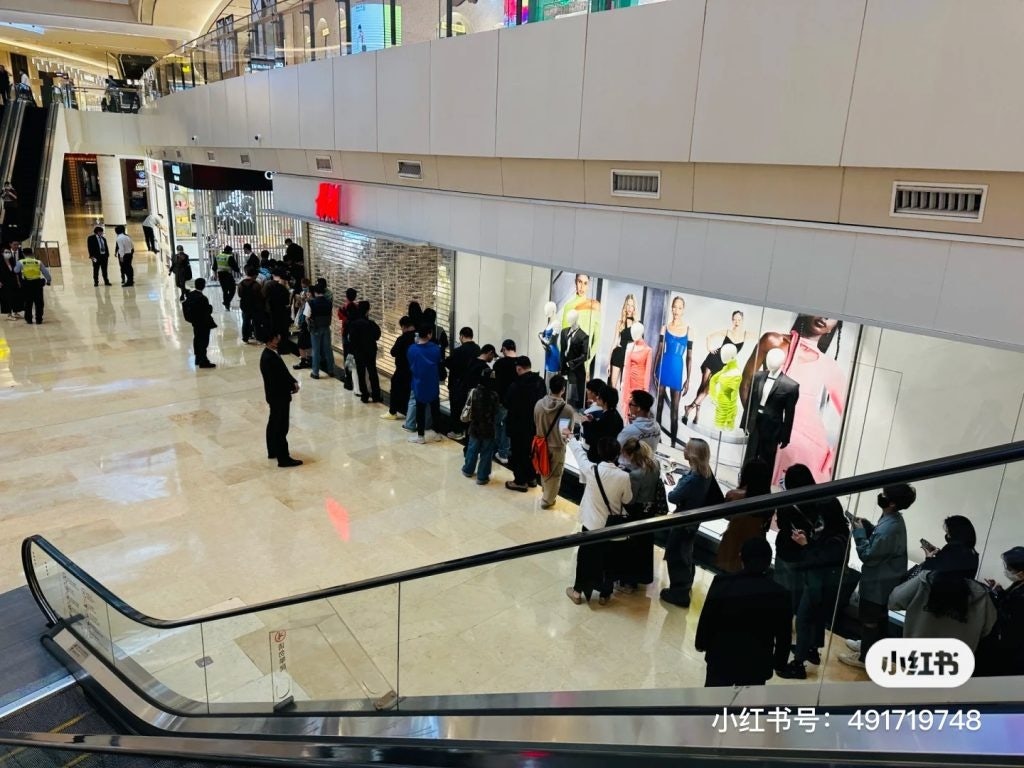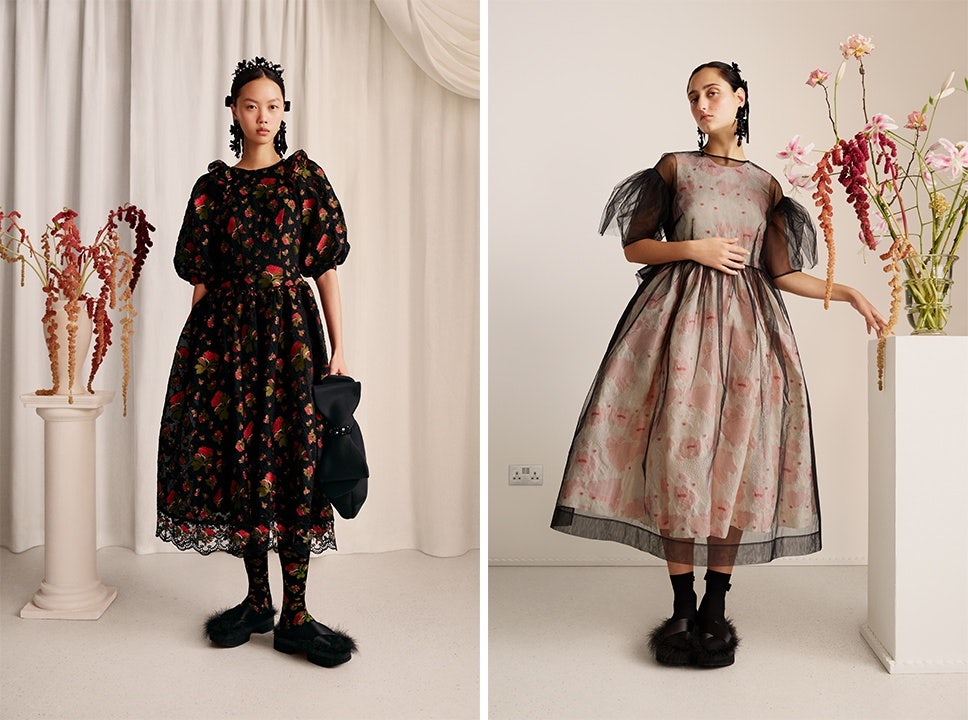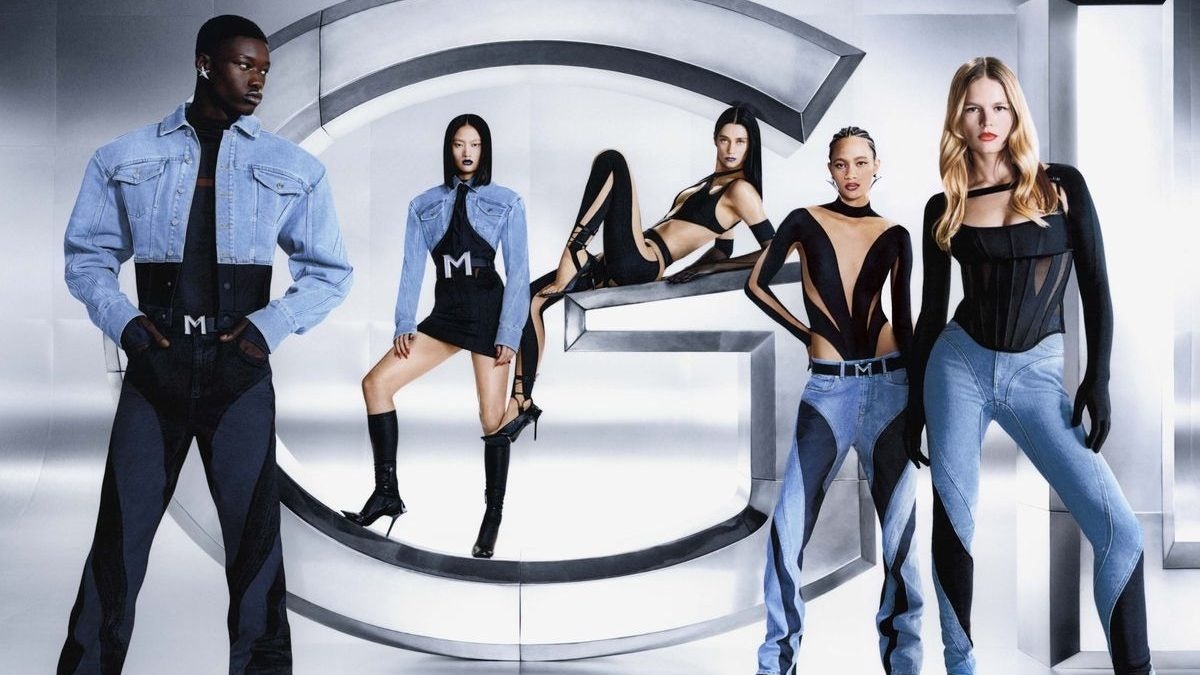What happened
To the surprise of Swedish fast fashion giant H&M, its collaboration with French independent designer brand Mugler was a runaway success in China – the clothing retailer greatly underestimated the capsule’s popularity in the country.
Featuring form-flattering catsuits with oversized shoulders, leather outerwear and spiral multi-seaming baggy jeans, H&M made the sensual collection available in only two of its offline stores in the mainland market, at Beijing’s Chaoyang Joy City and Shanghai’s Century Link malls, and via its website and WeChat mini program.

Some shoppers waited in line overnight outside the stores for the chance to buy the collaboration. H&M’s Shanghai Century Link store was forced to shut temporarily as eager shoppers clashed with each other. Meanwhile, H&M’s official Chinese website crashed shortly after the release of the collection on May 11 at 10am due to a surge of visitors attempting to purchase the limited supply items.
Social media platforms Xiaohongshu and Weibo were flooded with screenshots of the crashed H&M website posted by netizens. All the collection’s products had sold out online by 5pm on May 12. On Weibo, the hashtag #HM mugler attracted over 600,000 views, with users keen to find out who had succeeded in bagging an item from the coveted collection.
Clothing from the collaboration quickly appeared on used goods platform Xianyu, with some vendors charging a high premium.

The Jing Take
A similar scenario occurred when H&M collaborated with Irish designer Simone Rocha in March 2021. Fans could not purchase the collection’s girlish tulle dress and pearly-embellished accessories for a period of two hours as H&M’s China website, app, and WeChat mini program simultaneously crashed.
Rocha and Mugler’s popularity clearly indicates young Chinese consumers’ rising appreciation of and appetite for independent designer brands. According to a Chinese market research agency, the size of China’s independent designer fashion market was $8.1 billion in 2020 — an almost five-fold increase from $1.7 billion in 2011 – and it is expected to expand to $12.1 billion by 2025.

H&M’s latest collaboration is a boon for niche labels. The multinational retailer serves as an excellent springboard for these niche independent designers to test the market and rapidly build mainstream awareness. However, this approach is not without risks. Once made affordable through H&M, consumers may not be willing to pay collaborating designer brands’ usual price tag. One way to mitigate this is to offer consumers a taste of the designer’s pieces via simplified designs.
H&M is winning big from this partnership. Since it was the subject of a public backlash in March 2021 surrounding cotton produced in Xinjiang, the fast fashion giant has faced a challenging time in China. The consumer boycott led to a sales decline, and prompted the shuttering of stores. But the hugely popular collaboration with Mugler indicates a turnaround is under way.
The Jing Take reports on a piece of the leading news and presents our editorial team’s analysis of the key implications for the luxury industry. In the recurring column, we analyze everything from product drops and mergers to heated debate sprouting on Chinese social media.

